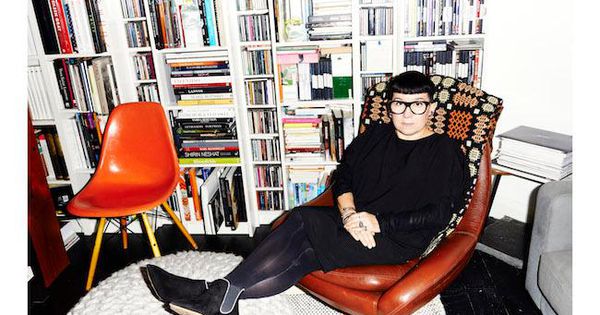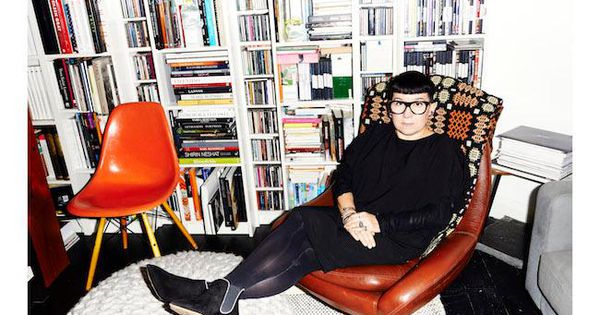
French-born and London-based, Valery Demure has carved out a singular position for herself on the European jewelry scene, as an industry reference and design disruptor. After nearly two decades in jewelry PR, sales and retail, last month she chose PAD London for the launch of her new venture, Objet d’Emotion, a consultancy that takes a carefully considered approach to buying jewelry. As she curates work from seven contemporary designers at PAD Geneva this weekend, I sat down with Valery to find out why Objet d’Emotion fills a gap in the market, for discerning customers in search of the unique, sculptural pieces that have become the Demure trademark
Kate Matthams: The Objet d’Emotion edit is different to a lot of the contemporary jewelry on the market. To what extent do the pieces you choose sit at the intersection of art and adornment?
Valery Demure: Very much. The name, Objet d’Emotion, implies we are the subject, that the object creates an emotion. I’ve always been very excited by objects, even as a young child. My house is full of things from the places I travel and I like hybrids: can a bracelet or a ring also be a sculpture or an object? I like signatures, singularity, and designers with a distinctive DNA.
Valery DemureValery Demure
Matthams: After many years in PR and jewelry wholesale, why did you choose a wider approach with Objet d’Emotion?
Demure: It’s hard for independent jewelry designers right now. Stores are passing the risk on to designers, sales assistants are not knowledgeable; all this makes it hard to sell the product. I was in the jewelry department of a big Paris store recently, and all the customer service representative could tell me about a particular designer was that she was American. She said clients usually only asked the price, I think that’s so sad.
Matthams: Do you think there’s also an element of people copying what they see on social media?
Demure: Yes, people buy into looks they see on Instagram, but that’s not the kind of client who is interested in originality. And for every jewelry designer with a huge Instagram following and the money to hold big events and gift a lot, there are others, equally talented, who are struggling because they don’t have the finances to offer consignment or pay big press offices.
Matthams: Are you seeing a move away from big retailers, more towards direct clients?
Demure: Certainly. We can shop 24/7, we’re overwhelmed and craving a brand with soul, a great buying experience. With Objet d’Emotion, I want to create a dialog and nurture the client relationship. I want to organize lunches, events, talks, where we can engage with customers.
Peal ring by Melanie GeorgacopoulosValery Demure
Matthams: So the impetus for Objet d’Emotion was to bring back the human connection?
Demure: Objet d’Emotion stems from frustration. Creative poetry has always been a constant in my life; I think we need it to deal with all the violence in the world right now. At a time when stores look the same the world over and push the same products, I want to put the poetry back into retail. We made our PAD stand as special as possible, with bespoke cabinets and furniture, and have the team available for dialog and exchange. It’s a fight against homogeny.
Matthams: Why did you choose to launch at PAD, rather than during Fashion Week?
Demure: At PAD we can show jewelry that is still special and one-of-a-kind, I don’t think showing designers who are widely available adds anything to the conversation. The PAD client is more sophisticated than the average fashion client, and at PAD London, our clients were mainly 35-plus.
Matthams: That’s refreshing to hear, when brands all seem to be desperately fighting over the millennial consumer.
Demure: Yes, we shouldn’t forget about everybody else; there are women with taste who might buy one a piece a year, but make it really special. And then there’s bespoke – clients might have a beautiful stone or their grandmother’s necklace, and we can help put them in touch with the right designer and guide them through the process of developing a unique piece. A gentleman came in who wanted to propose with a sketch, so that both he and his fiancée could be part of the design process. I loved that!
Matthams: Who are you showing at PAD?
Demure: Right now in Geneva we have Fabio Selini; Melanie Georgacopoulous, who I have supported since the beginning; Nadia Morgenthaler; Philippe Guilhem, whose bronze rings with amazing stones I absolutely love; Sharon Khazzam, Silvia Furmanovich, and Yael Sonia. At PAD Paris in April, it will be slightly more fashion-focused, easier collections
Bronze ring by Philippe Guilhem, shown by Valery Demure at PAD GenevaValery Demure
Matthams: Has the jewelry market felt the impact of Brexit already?
Demure: Yes, there have been so many consequences already. People are very cautious, I think they are anxious and depressed, not inspired. Also, online has really changed the game, we are saturated all the time with content, the consumer is completely overwhelmed. I think we need to come back to less is more and make more mindful decisions. Clearly, there is an ethical problem somewhere in the supply chain if you can buy a $4 T-shirt and by the same token, in jewelry, there is a lot of ripping-off of other people’s ideas. If you buy Polly Wales, you’re buying from someone who still works on the bench with her team. Alice Cicciolini only uses natural, untreated stones that she buys from a reliable source, so her stones are fairly traded, fairly mined.
Matthams: What changes in the industry have you seen now that ethical production and sustainability are front and center?
Demure: Lab diamonds are big, transparent supply chain is big. There will always be customers who don’t care, but I think on the whole they are becoming savvier and more sensitive to the importance of sustainability and ethical production. They want to know about provenance and craft, we have a responsibility to know these details. All of my designers are as ethical as they can be, they work with small workshops and source their stones carefully, I couldn’t work with a designer otherwise. We need to come back to meaningful purchases and reassess what luxury is, the way we consume, what we are teaching our children.

